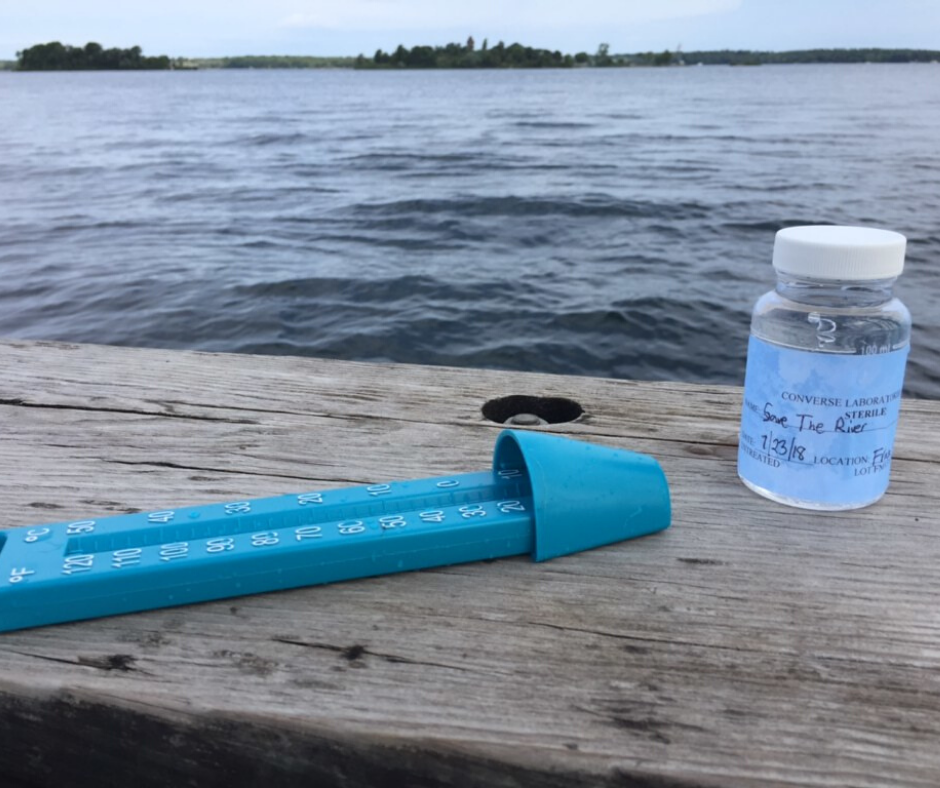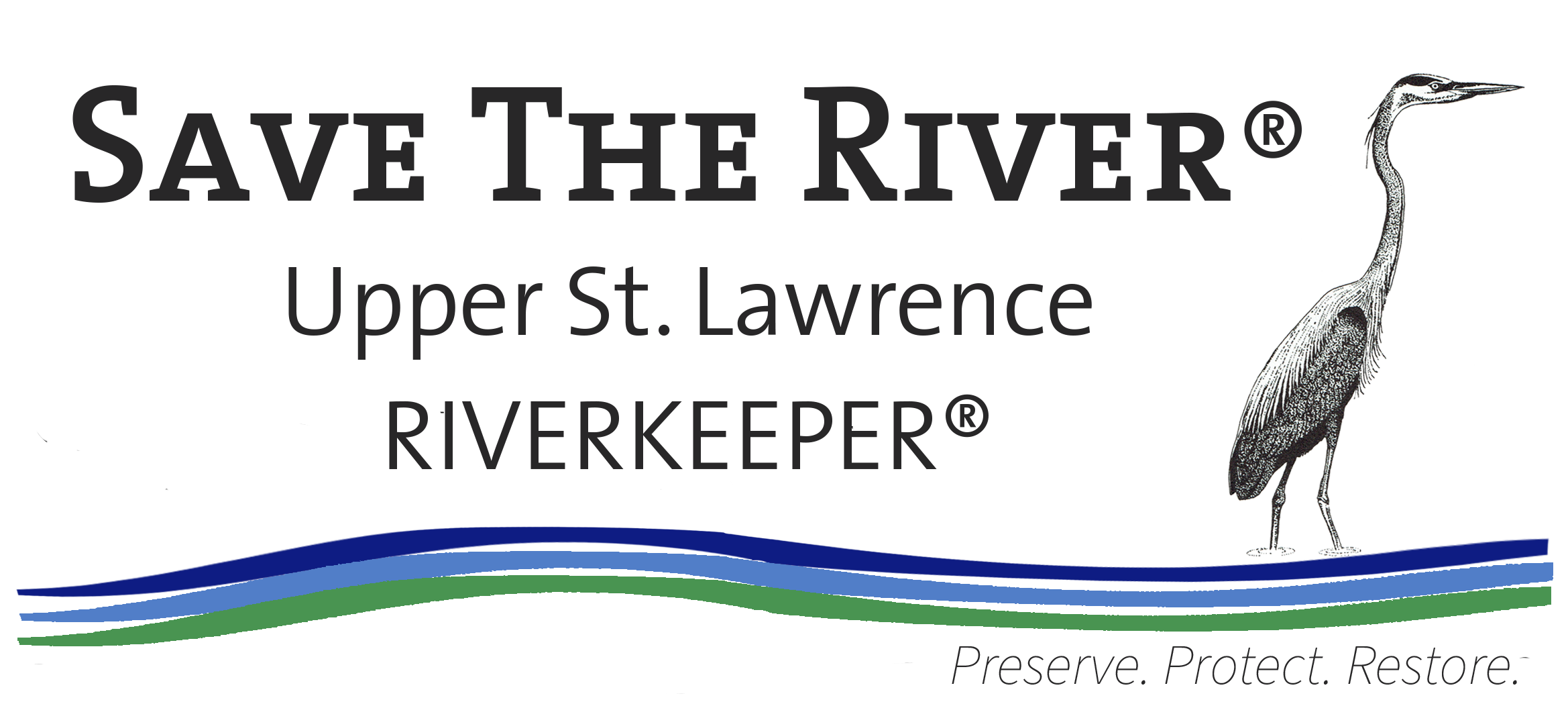Save The River’s Beach Watch program aims to test the water quality of seven local beaches and popular swimming destinations to ensure a safe swimming environment. Water quality is monitored by testing the levels of E. coli bacteria, which in high amounts can cause illness. E. coli is a common indicator used for testing of fecal contamination in waterways and is the recommended indicator in fresh waterways. Results are expressed in the number of bacteria colonies found in a 100 milliliter (ml) sample of swimming water. The New York State Health Department has set a swimming water quality limit of 235 colonies of E. coli bacteria per 100 milliliters of water for a one-time sample and 126 colonies for an average result over five weeks.
This year marks the 21st season of Save The River’s Beach Watch program. With the help of volunteers, seven swimming locations are tested every Monday for nine weeks from July 6 through August 24. The seven testing sites are Frink Park in downtown Clayton, Scenic View Park in Alexandria Bay, Thousand Islands Park Cove, Lake of the Isles on Wellesley Island, Wilson’s Beach in Cape Vincent, Round Island in Clayton, and Potters Beach on Grindstone Island. Weekly monitoring results are posted on Save The River’s website and social media, at their 409 Riverside Drive, Clayton storefront, and on the Swim Guide mobile app and website.
 The Week 2 Beach Watch results from July 13, 2020, showed that all seven locations that submitted samples passed: Frink Park, Potter’s Beach, Lake of the Isles both, Wilsons Beach, Alexandria Bay and Round Island had acceptable swimming water quality standards below 235 colonies per 100 ml sample. Initially, TI Park Cove had above threshold e-coli levels, but a restest on July 15th showed normal ranges.
The Week 2 Beach Watch results from July 13, 2020, showed that all seven locations that submitted samples passed: Frink Park, Potter’s Beach, Lake of the Isles both, Wilsons Beach, Alexandria Bay and Round Island had acceptable swimming water quality standards below 235 colonies per 100 ml sample. Initially, TI Park Cove had above threshold e-coli levels, but a restest on July 15th showed normal ranges.
If a New York State swimming beach fails a water quality sample, the beach will close until it passes a resample test. However, Save The River monitors the Beach Watch program on a volunteer basis and has no authority to close the swimming areas we sample. The results are used to highlight areas of concern and inform landowners and stakeholders of potential health risks. When there is a situation of high bacteria, Save The River submits those results to local and state authorities for their use and action.
Volunteers collect samples Monday mornings and bring the sample to Save The River by 9:15 am. If you would like to learn more about this volunteer opportunity, contact Bridget Wright at bridget@savetheriver.org.
